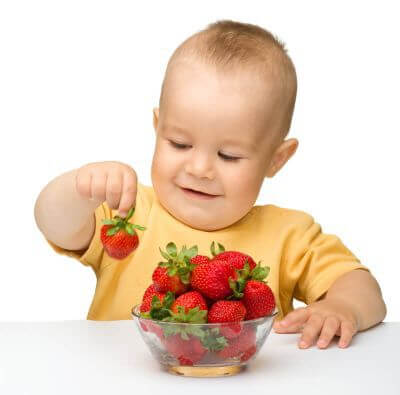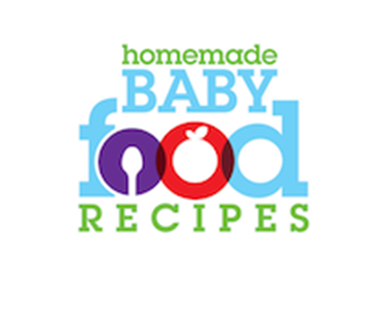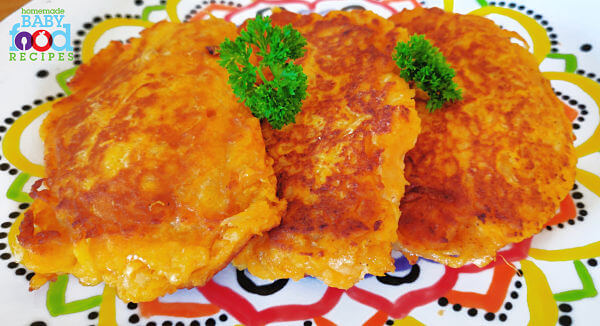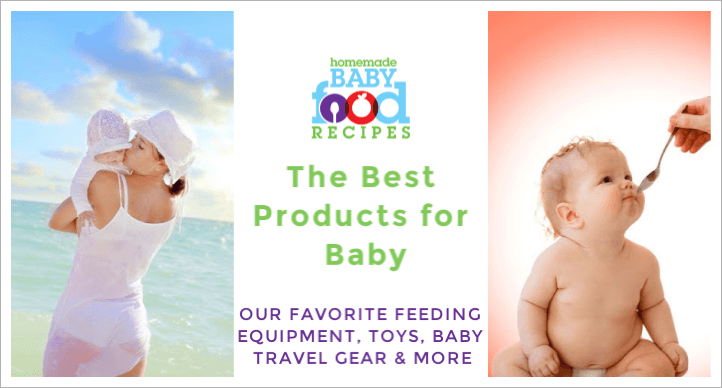Baby Led Weaning
Updated: Aug 16, 2023
Baby led weaning is a relatively new approach to introducing solids… but one that rapidly gained momentum!
The principle behind baby led solids is that baby is allowed to feed himself age appropriate foods, through which he progresses at his own pace.

This means that he’s offered a variety of foods to eat with his fingers, from which he may eat only as much as he wants.
Food is never placed in his mouth – instead, he is encouraged to determine for himself exactly what he wants to eat… and when he has had enough.
The whole concept of baby led weaning centres around the research for a master’s degree conducted by Gill Rapley, the ex-Deputy Programme Director of UNICEF’S UK Baby Friendly Initiative.
Ms Rapley – whose research into the introduction of solids was entirely separate to her work for UNICEF – says that babies should only start solid foods once they have the ability to feed themselves (in other words, once they can get food into their mouths without parental assistance).
This generally happens at around 6 months of age.
Her theory – and the very basis of the baby led weaning approach – is that babies should be free to explore and experiment with foods by themselves and without help from their parents (although not, of course, without supervision).
Parents who do baby led weaning do not spoon feed their little ones and usually bypass pureed food altogether.
Instead, they offer their babies a selection of manageable, nutritious foods from which they help themselves.
Mealtimes end at the point where baby stops eating – there is no encouragement to continue eating past this point.
If you’re considering baby led weaning, then you might be concerned that your baby will not eat as much as he actually needs.
So you may be reassured to discover that babies are actually very good at deciding just how much food their bodies require!
In fact, many experts believe that overriding that innate ability (by encouraging children to ‘eat up’ at the point where they begin to show signs of being full) may contribute to problems with weight gain in later life.
This is something we discuss is more detail here (please note that this page refers to both spoon fed and self-feeding babies).
Baby led weaning and choking
If you’re considering baby led weaning and researching it for the first time, your biggest concern may be that bypassing purees and giving your baby pieces of food from the very beginning may lead to choking.
There are several reasons, however, why this fear is unfounded.
IMPORTANT NOTE: Whilst rare, choking is something that can happen at ANY time to ANYONE, including adults.
It’s always a good idea to be prepared by learning HOW to deal with a choking incident should one ever occur.
There are online instructions available which show you how to help a choking baby, but the best option is to attend an official course dealing with infant resuscitation. Contact your local Red Cross for more information.
Much of the literature published about baby led solids suggests that the associated choking risk is actually LESS than with the traditional method of spoon feeding.
This is based on the premise that a baby is able to intentionally move food to the back of his throat only after he has developed the ability to chew it.
The theory is that a baby who is controlling what goes into his mouth is less likely to choke than a spoon fed baby, who may suck food to the back of his throat before he is properly able to deal with it.
This is why it is very important NOT to assist your baby when eating, should you choose to follow the baby led weaning approach.
If you help your little one to get pieces of food into his mouth that he could not have placed there by himself, then the risk of choking increases significantly.
Few formal studies have been carried out to either support or refute the theory that baby led weaning is any less likely to contribute to choking than spoon feeding.
However, the risk of choking is certainly no reason to shun baby led weaning, provided that the usual, common sense precautions outlined on this page are taken when offering your baby foods to feed himself.
Please do remember that gagging and choking are two different things.
Gagging is common when solids are introduced and is simply baby’s in-built defence against choking. Constant, excessive gagging, however, may be a sign of a hyperactive gag reflex.
You can read more about gagging here (please note that this page also contains information related to spoon feeding).
Does my baby need teeth?
No.
As long as the foods you are offering are appropriate (see the section on this page regarding preparation) then your little one will be perfectly capable of ‘smooshing’ food with his gums (if you’re nursing, then you’ll already be aware of just how powerful your baby’s gums really are!).
This is the same recommendation that we would give to parents who spoon feed their babies, but are considering offering finger foods.
The benefits of baby led weaning
- Babies naturally enjoy exploring and experimenting with food.
The baby led weaning approach makes the introduction to solid foods fun and enjoyable and eliminates the stress that some parents feel when trying to spoon feed an unwilling infant! - Many parents find that baby led weaning allows baby to participate more readily at family mealtimes.
Although spoon-fed babies can (and should!) enjoy meals with the rest of the family, some parents find those meals easier when baby is feeding himself (plus baby enjoys copying what mummy and daddy are doing!). - It can seem like a natural transition for breastfed babies (although it’s suitable for bottle fed babies too!).
Baby led weaning follows the ‘feeding on demand’ principle that is the foundation for successful nursing – additionally, it utilizes the ‘chewing’ motion that baby has already mastered during breastfeeding. - Baby led weaning may prevent weight problems as it gives baby complete control over the amount of food he consumes.
Recent research (which we reported on our blog) appears to confirm that infants weaned using the baby-led approach learn to regulate their food intake in a manner that leads to a preference for healthy foods. - Baby led weaning appeals to the independent nature of many infants.
We sometimes hear from parents whose little ones absolutely refuse food from a spoon, but are more than happy to feed themselves! - Baby led feeding encourages experimentation with texture, which can avoid the issues that some parents experience as they try to transition their babies from smooth purees to little ‘lumps’!
- Preparation is quick!
As foods need only to be cooked, or cut to appropriate sizes/shapes, the preparation of baby’s meals is a little quicker than when pureeing or mashing.
The disadvantages of baby led weaning
- It can be very messy!
Baby’s natural desire to play with his food can mean that a lot of it ends up on the floor.
Be prepared to cover your carpets – but do note that baby led weaning is no messier than the introduction of finger foods for spoon-fed babies, or when baby is given the spoon to feed himself! - It can lead to a lot of wasted food.
Our advice is to offer a range of foods, but only a little of each type.
This approach will keep waste to a minimum.
Also, if you cover the floor during meals (as suggested above) then you can return to your baby any food he has thrown off his table! - Meals may take longer than those given via a spoon.
If you have commitments at certain times of day (the school run for older children, for example), then you may need to organize mealtimes in such a way as to allow your little one the time he needs to feed himself adequately. - Other care givers (grandparents, babysitters etc) may be uncomfortable using the baby led weaning approach at mealtimes.
It’s a good idea to have them ‘sit in’ on a few meals so they see it is not as scary as they might think! - Some daycare facilities may not support (or even be familiar with) the baby led weaning approach.
Ensure you discuss this method thoroughly with your daycare provider ahead of time – our advice is to keep in mind the fact that YOU are paying THEM and that your wishes in this are paramount!
If your daycare provider seems unwilling to allow your child to feed himself without intervention, then you may wish to look for an alternative facility where the staff are more comfortable with the baby led weaning philosophy and methods. - Baby led weaning may not be suitable for babies with specific dietary needs, particularly those requiring extra nutrition (babies with reflux, for example, or low birthweight/premature babies).
In these cases, baby may require the extra calories that solid foods provide, but may not yet be developmentally ready to self feed. - Some parents may be concerned that baby is not getting the nutrients he needs (although it’s important to remember – whether using baby led weaning or feeding from a spoon – that breast milk or formula should be seen as baby’s primary source of nutrition for the first 12 months of life).
It’s also worth pointing out here that concerns that baby isn’t eating enough are not exclusive to parents who do baby led weaning.
Parents who spoon feed often worry about this too! - You may encounter opposition from pediatricians, health visitors etc, particularly those unfamiliar with the concept of baby led weaning.
Although this shouldn’t stop you from proceeding (unless there is a specific medical reason why baby led weaning would be inappropriate for your little one), it’s something to be aware of, as you may be asked to defend your choice at some point!
When to start with baby led weaning
With this approach to introducing solids, the timing is really up to your baby!
The theory behind the practice of baby led weaning is that a baby who is unable to get food to his mouth unaided is unable to eat it.
This level of ability tends to occur at around 6 months of age – seldom much earlier, but sometimes later.
In addition to being able to get food into his mouth, your baby should also be able to sit upright – this is important to reduce the risk of choking (as it is for babies fed from a spoon).
foods to avoid
By 6 months of age onwards, babies are able to enjoy a wide variety of foods.
Some foods, however, are more likely than others to cause allergic reactions or digestive problems.
Though these foods do not necessarily have to be excluded from your baby’s diet, it’s best to be aware of them, particularly if your baby has any existing allergies or if there is a family history of food allergy.
You can review a list of foods to avoid here – this page also contains a list of known choking hazards which should be avoided until your baby is older.
You can read more about baby food allergies here.
This page contains information about feeding a baby with G6PD Deficiency
It is always prudent to check with your doctor as you introduce new foods to your baby.
He or she will be familiar with your baby and your family history and is, therefore, the best person to advise you as to any foods you should delay introducing until your baby is older.
How do I prepare food for baby led weaning?
The nice thing about baby led weaning is that you really don’t need to do anything to prepare homemade baby food, other than what you are already doing when cooking for the rest of the family!
Foods should be of a texture that babies can ‘gum’ efficiently, so firmer fruits and veggies should be cooked until relatively soft.
Since most babies of around 6 months of age won’t have yet developed the ‘pincer grip’ which enables them to pick up very small pieces of food, it’s better to offer your baby larger pieces of food.
At this stage, he is likely to grasp these pieces in his fist and gnaw on them.
The same applies to foods like meat, which are easier for younger babies to handle when presented in larger pieces.
Many parents who use the baby led weaning method recommend cutting foods into ‘baton’ shapes, which are easily held in little fists.
Another popular choice are foods like broccoli, with the natural ‘handle’ provided by the stem.
Don’t worry if your baby rejects certain foods…
Continue to offer those same foods in the future and your baby may just surprise you by developing a taste for them!
Offering your baby a wide variety of tastes and textures from the outset should go a long way towards avoiding fussy feeding later on!
As you can see, it can be as straightforward as selecting nutritious components from your own meal and offering them to your baby to enjoy along with you (although please do not share foods with your baby to which you have added salt – here’s why).
If foods are too slippery for your baby to hold….
There are a couple of things you can try!
Either coat the foods in wheat germ, ground flax or sugar-free crushed cereal – or cut the foods with a crinkle cutter, which gives handy ridges to help your baby get a grip.
It can also be helpful to leave the skins on certain foods (see below).
Do I need to peel foods for my baby?
It’s actually quite surprising how quickly babies learn which parts of a fruit or vegetable are edible (or manageable!) and which parts are not.
Many parents offer fruits and vegetables to their little ones with their skins still on.
They find that their babies tend to spit out any parts of the fruit or veggie that they cannot (or do not want) to eat.
That being said, offering a very young baby a whole pear, for example, would present him with quite a challenge – so the most common approach is to cut the fruit or veggie into chunks, exposing the flesh and making it easier to cope with.
There are other considerations to take into account when deciding whether or not to peel fruits and vegetables for your baby – you can read more about these here.
Do I need to cook ALL fruits and vegetables for my baby?
No – if they are soft enough for your baby to cope with, then some vegetables and fruits can be offered raw (a ripe, juicy pear for example, or a chunk of melon).
We have more information about the pros and cons of cooking fruits and veggies for your baby here.
Does baby led weaning mean no ‘spoonable’ foods at all? What about foods like oatmeal and yogurt?
Many parents who use the baby led weaning approach to introducing solids tend to be very passionate about its advantages and do not advocate the offering of foods from a spoon at all.
But this doesn’t mean that baby can’t enjoy ‘smoother’ foods – in fact, a smooth texture is a texture in itself, just waiting to be experienced!
It’s possible to offer foods like yogurt as a ‘dip’ to accompany cooked veggies, soft fruits etc.
Likewise, foods such as cream cheese can be mixed with herbs and even chopped vegetables to create tasty spreads or fillings for little sandwiches.
Another idea – although frowned upon by some – is the concept of ‘loaded spoons’.
This means presenting baby spoons that are pre-loaded with spoonable food such as oatmeal, then allowing him to feed himself from those spoons if he wishes.
Remember – the point of baby led weaning is not that baby does not use a spoon at all, but is merely that food is not given to him via a spoon.
Rather, he is encouraged to take what he needs!
Can I switch to baby led weaning if I’ve already introduced purees?
Yes – in fact, some parents naturally make the switch when they have little success with spoon feeding and realize that their independent babies would prefer to feed themselves!
Some parents also combine the two, giving the occasional spoonful of food to supplement self feeding (although this is not in keeping with the true philosophy behind the baby led weaning method).
What happens if baby won’t eat?
Then it’s likely that..
a) he’s not ready or
b) he’s not hungry!
Various factors can influence a baby’s willingness to eat, including teething and generally feeling unwell.
If your baby is adequately gaining weight (which your doctor can determine using baby’s personal growth chart) then milk is providing all the nutrition he needs and there is no need for alarm if he is eating little in the way of solids.
As his need for solids increases, you will notice a heightened interest in food and an increase in the amount he consumes.
Offering milk and water
As we stated earlier, milk remains baby’s most important source of nutrition for much of the first 12 months of life.
Therefore, it is important that you continue to breastfeed on demand, or offer formula as usual, when introducing solid foods.
Extra water is not usually necessary for breastfed babies, but some doctors recommend offering a little water to formula fed babies when solid foods are introduced (learn more about giving babies water here).
Will adopting the baby led weaning approach stop my baby learning how to use cutlery?
No – no more than offering foods from a spoon would!
Even though you are not directly spoon feeding your child, you can still provide a spoon for him to experiment with (or you can use loaded spoons, as described earlier).
Remember – babies love to mimic, so once your little one becomes old enough to notice that YOU are using cutlery, you can bet that HE will want to, too!
other parents’ experiences
From Lindsay Olson…
We have a 9 month old who is doing baby led weaning and we all couldn’t be happier.
We started at six months and she took to it immediately. It’s made life with a baby much easier.
We just spent the last 3 weeks traveling in Italy and she just ate whatever was suitable for her off our plates.
Or if we weren’t eating something suitable, everyone was very nice and would give us a little extra vegetables or something she would like.
Our baby loves it.
She grabs for everything and there hasn’t been anything she’s tried that she has rejected.
The only downside, and I’m not really sure it’s one, is the mess in the beginning – but surely spoon feeding and preparing purees, etc, is a bit messy, too.
And the puzzled (and worried) looks from other people in the beginning wondering why you are giving your small baby food in this form.
I couldn’t imagine introducing solids in any other way with our next child.
From Dr Tom Potisk (graduate of Palmer College of Chiropractic and natural health practitioner)…
I am branded as The “down-to-earth” doctor because of my personal holistic lifestyle and practical, easy-going teaching ability.
My position on baby-led weaning is a perfect match to my brand.
I advocate baby-led weaning and all three of my children were weaned that way.
Each child did it at different ages.
My wife breast fed them until they didn’t want to anymore.
When we saw them start grasping for solid foods, then we knew it was time to start introducing it slowly and carefully.
Infants are born with immature digestive systems that are not able to easily break down and assimilate foods.
The enzymes in their guts are not sufficient to break down foods.
Their digestive systems are extremely porous and that’s why it’s not healthy to give them solid foods too soon.
Their digestive capacity is weakened if food is introduced too fast, increasing their likelihood for chronic childhood and adult illnesses.
from our blog:
Potato pancakes for baby led weaning…
Share your experiences with baby led weaning
Do you have any opinions, comments or experiences with baby led weaning that you’d like to share? We’d love to hear from you!
Please note:
We check all submissions to our website prior to publication to ensure that content is original. All submissions are considered to be from non medical professionals – if you are a medical professional and choose to submit any information for publication on our website, you must identify your professional status. We require that all submissions are respectful and honest – submissions containing inappropriate content will not be published. You must be at least 18 years old to submit your experiences and comments to this website. The information given here is not intended to replace the advice of a health professional.
What Other Visitors Have Said
Click below to see contributions from other visitors to this page…
Baby led feeding… by accident!
I stumbled upon this website after searching for finger food recipes for my 9-month-old daughter. At around 7 months my daughter became resistant to spoon …
Baby led weaning – much faster progress than I expected!
My son is now 9 months and we started BLW at 6 months. We have loved the experience and I think he has too. He took to the concept of solid food very smoothly…
What is being called “Baby Led Weaning” is an approach that has been practised in the Caribbean for many years. I have seen it done by family and friends …


